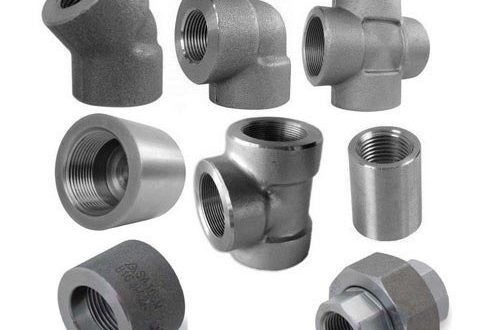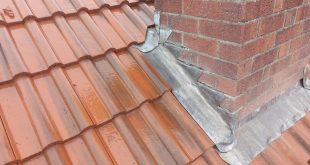When it comes to plumbing and pipework, screwed fittings are a popular choice for their simplicity, reliability, and versatility. These fittings play a critical role in residential, commercial, and industrial systems, offering an easy, cost-effective way to connect pipes. This guide covers everything you need to know about screwed fittings, from their types and applications to tips for selecting and maintaining them.
What are Screwed Fittings?
Definition and Overview
Screwed fittings, also known as threaded fittings, are pipe components with threads that allow them to connect to other threaded pipes. These fittings are commonly used in lower-pressure systems where welding isn’t necessary.
Key Features of Screwed Fittings
The main feature of screwed fittings is their ease of installation, requiring no welding or specialized tools. They are available in various shapes and sizes, designed to meet a broad range of applications.
Types of Screwed Fittings
- Elbows – Allow for directional changes in the pipe layout.
- Tees – Enable the pipe to branch into three directions.
- Couplings – Connect two pipes in a straight line.
- Unions – Provide a quick-disconnect feature.
- Bushings – Reduce the pipe size by allowing different diameters to connect.
Each type serves a specific purpose in creating and modifying pipe networks.
Materials Used in Screwed Fittings
Stainless Steel
Highly durable and corrosion-resistant, stainless steel is a preferred choice for many applications.
Brass
Brass fittings offer good corrosion resistance and are commonly used in water systems.
Carbon Steel
Carbon steel fittings provide strength and durability, often used in industrial applications.
Other Materials
Other options include copper, PVC, and galvanized steel, each with properties suited to particular applications.
Benefits of Using Screwed Fittings
Ease of Installation
Screwed fittings don’t require welding, which simplifies the installation process and makes them ideal for less experienced installers.
Cost-Effectiveness
Compared to welded fittings, screwed fittings are generally more affordable, both in terms of material cost and installation labor.
Ideal for Low-Pressure Systems
They are ideal for lower-pressure systems, such as residential plumbing, due to the simplicity and reliability of threaded connections.
Reusability
Screwed fittings can be disconnected and reused, making them a flexible option for temporary or evolving setups.
Applications of Screwed Fittings
- Residential Plumbing: Screwed fittings are widely used in home plumbing systems for their ease of installation.
- Industrial Applications: Common in systems where pressure is low and the need for reconfiguration is frequent.
- Oil and Gas Industry: Used in some low-pressure areas and for testing purposes.
- HVAC Systems: Provide flexibility and are easy to maintain within heating, ventilation, and air conditioning setups.
Differences Between Screwed and Welded Fittings
While screwed fittings are ideal for low-pressure systems and temporary installations, welded fittings are preferred in high-pressure environments for their leak-proof strength. Screwed fittings also offer reusability, whereas welded joints are permanent.
Selecting the Right Screwed Fitting for Your Project
Considering Material
Choose the material based on the environmental conditions and the nature of the fluid passing through the pipes.
Thread Type (NPT, BSPT, etc.)
It’s essential to select the correct thread type to ensure compatibility with existing pipe systems. Common thread types include NPT (National Pipe Thread) and BSP (British Standard Pipe).
Thread Standards for Screwed Fittings
National Pipe Thread (NPT)
NPT is commonly used in the United States and is known for its tapered threads, which provide a tight seal.
British Standard Pipe (BSP)
BSP threads are commonly used in Europe, with two variations: BSPT (tapered) and BSPP (parallel), both providing distinct sealing mechanisms.
Common Challenges with Screwed Fittings and How to Overcome Them
Challenges with screwed fittings include potential leaks due to improper threading or misalignment. Using thread tape or sealant can help improve the connection’s durability and prevent leaks.
Installation Tips for Screwed Fittings
Tools Required
Basic tools such as a pipe wrench, thread tape, and sealant are essential for installing screwed fittings properly.
Steps for Proper Installation
- Clean the threads to remove debris.
- Wrap thread tape around the male threads to improve the seal.
- Tighten the fitting with a wrench, ensuring it’s snug but not overly tight to avoid thread damage.
Maintenance of Screwed Fittings
Inspection Frequency
Inspect screwed fittings periodically for signs of wear or leaks, especially in high-use systems.
Cleaning and Repair
To prevent build-up, clean the fittings occasionally. If leaks or cracks appear, consider replacing the fitting to maintain system integrity.
Safety Considerations When Working with Screwed Fittings
When installing or maintaining screwed fittings, it’s crucial to wear proper protective gear and work with tools carefully to avoid injuries or leaks that could lead to accidents.
Environmental Impact of Using Screwed Fittings
Screwed fittings are typically made from recyclable materials, which makes them more sustainable. Additionally, their reusability reduces waste and allows for eco-friendly adjustments in piping systems.
Conclusion
Screwed fittings are a reliable, cost-effective choice for many piping systems, particularly in residential and low-pressure industrial applications. By understanding the different types, materials, and thread standards, you can make informed decisions that will ensure the longevity and efficiency of your systems.
 Diverse Perspectives: Insights & Stories Exploring Ideas, Sharing Knowledge
Diverse Perspectives: Insights & Stories Exploring Ideas, Sharing Knowledge





